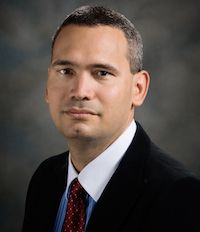Article
HCV Can Reactivate with Treatment of Non-hepatic Cancer
Author(s):
HCV reactivation can occur during treatment of non-hepatic cancer, increasing risk of hepatic injury and interfering with cancer treatment.

Harrys Torres, MD
Hepatitis C virus (HCV) reactivation to occur in approximately 1 out of 5 patients treated for non-hepatic cancer, posing renewed risk for hepatic injury and possibly complicating the cancer treatment.
Harrys Torres, MD, Department of Infectious Diseases, University of Texas MD Anderson Cancer Center, Houston, TX and colleagues reported that reactivation occurred in 23 of 100 patients (23%) in a 36-week prospective study. Ten of these patients (43%) experienced a hepatitis flare, 6 of whom then required discontinuation or dose reduction of cancer treatment.
"Although hepatitis flares were observed, no patient had liver failure or died of a liver-related cause," researchers wrote, "however, hepatitis flare caused modification of cancer treatment, and such modification may have a negative effect on oncologic outcomes."
In an editorial accompanying the study, Michael Kriss, MD and Matthew Burchill, PhD, of University of Colorado School of Medicine’s Division of Gastroenterology and Hepatology, suggest that the duration of the study may not have been sufficient to be reassured by hepatic injuries being relatively benign.
"While it has been reported that an increase in HCV viral load correlates with rapid progression to end-stage liver disease, clinical and scientific consensus of this correlation has yet to be established," Kriss and Burchill wrote. "Therefore, it is imperative to determine if treatment of HCV with DAAs (direct-acting antivirals) prior to or concurrent with chemotherapy are attractive options to prevent HCVr (reactivation) and long-term liver-related outcomes."
The prospective study involved 50 HCV-infected patients receiving treatment for hematologic malignancies and 50 treated for solid tumors between November 2012 and July 2016. HCV reactivation was defined as an increase in HCV-RNA of at least 1 log10 IU/mL, and hepatitis flare as an increase in alanine aminotransferase to at least 3 times upper limit of normal.
The 23 patients with HCV reactivation included 18 (36%) with hematologic malignancies and 5 (10%) with solid tumors. These patients were more likely than those without reactivation to have had a prolonged lymphopenia (median 95 versus 22 days) and to have received rituximab (44% versus 9%) or high-does steroids (57% versus 21%).
Kriss and Burchill suggest that the findings support an interrelationship between the clinical phenomena of HCV reactivation and the immunologic mechanisms underlying both hepatologic and oncologic outcomes in HCV-infected cancer patients.
They point to a confliction, however, in the finding that rituximab was significantly associated with HCV reactivation. While rituximab induces the selective depletion of B lymphocytes through antibody-dependent cellular cytotoxicity and that this contributes to its association with hepatitis B virus reactivation, immune system mechanisms responding to HCV infection are largely independent of B lymphocytes.
Torres and colleagues indicated that the potential risk of developing HCV reactivation should not be considered a contraindication for chemotherapy.
"Our findings should help HCV-infected cancer patients have a wide access to many types of chemotherapy, with close monitoring while receiving regimens associated with HCV reactivation," they concluded.
Kriss and Burchill elaborate on that precaution.
"The data from Torres et al demonstrate that care needs to be taken in monitoring HCVr in patients, particularly those receiving targeted immunotherapies that manipulate the components of the immune system that control HCV,” they wrote.
The study, "Hepatitis C virus reactivation in patients receiving cancer treatment: A prospective observational study" was published online in Hepatology last month.
Related Coverage >>>
Diabetes Therapies Considered for HCV Patients with Insulin Resistance
The Push to Inform the Many Dangerous Effects of HCV
Researchers Consider Hepatitis C Vertical Transmission Rates





